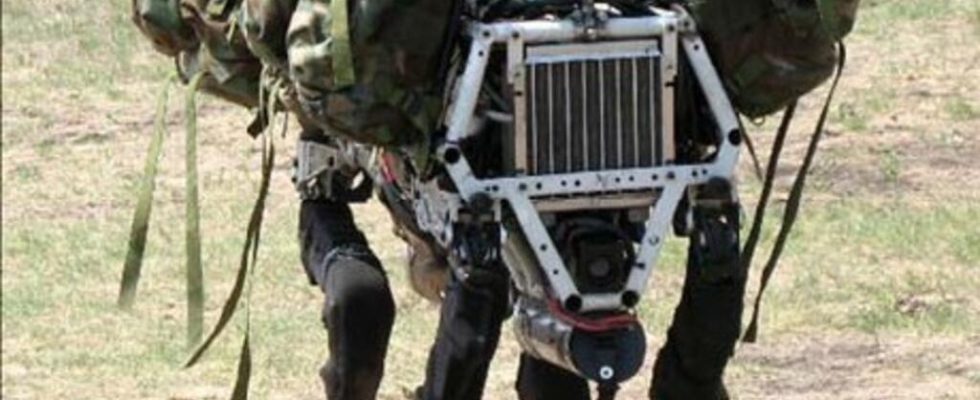Last May, the Army organized the second edition of Robotics Day at the Beynes military camp near Paris. This event aims to highlight the reflections and projects carried out in the field of lethal autonomous weapon systems. The robotic revolution in the Army is the theme of this Lines of Defense. (Rebroadcast May 14, 2023)
Ammunition prowling in the air or even anti-tank kamikaze drones, the war in Ukraine already illustrates what the battles of the future will be on a larger scale. The robotic breakthrough has indeed begun and within the Army staff, Colonel David Schuster imagines the possible synergies between men and machines, with the aim of equipping himself with robotic regiments by 2040. .
” In 2040, we are really aiming for fully robotized units. That does not mean without men, these are units that will mix systems that integrate a lot of autonomy with units that are a little more traditional. What we will call robotic operational units. To do what ? Identify the most promising leads from a tactical point of view. For example today, in a very natural way, drones are used for surveillance. But when we talk about tele-operated munitions, we see that these same drones, we put an active charge on them and we use them to neutralize the targets. Tomorrow, isn’t a drone something that we can place somewhere, which will act as a sentinel, which will monitor over the long term ? Are we not going to do this to terrestrial robots as well, which will perhaps be able to carry much heavier payloads for combat, tank destruction, electromagnetic interception ? »
In the future, robots will be ubiquitous
Or even carry out logistics work to supply the front lines, robots will therefore be omnipresent in the future, but they will never be completely autonomous because the machine has its weaknesses, points out David Schuster: “ What the robot struggles to do is cope with the unexpected. But war is a succession of unforeseen events, that’s why we believe in this human-robot pairing. In fact, the robot will help the man in some cases and in other situations, it is the man who will help the robot. The limits of the robot, it will be to face the unexpected and react. And no matter how much we talk about artificial intelligence, war is a completely unstructured environment in which the unexpected is constant. It is extremely complicated to understand for a system that is not a human “.
The Army closely observes the proliferation of prowling ammunition, capable for example of saturating and even polluting, says Colonel Schuster, a battlefield. ” Deploying systems that will generate a diffuse threat in an area with a certain permanence, we are clearly on the same approach as an area polluted by a chemical agent or a bacteriological agent. And so today, we are starting to think about this notion of pollution of certain areas of the battlefield by SALA, lethal autonomous weapon systems. It’s not a fear, it’s a parameter that we integrate into the tactical reflections. A killer robot, it will fear kinetic action, it will fear a missile, so it’s up to us to find our own mode of action. Let’s take an example with tele-operated prowling ammunition that operates in swarms, tomorrow these swarms will very well be able to face an entirely robotic unit which will be able to neutralize them. »
If the 2024-2030 military programming law does not give quantified objectives, it is a question for the French forces and in particular the Army of having at short notice several thousand remotely-operated munitions.
